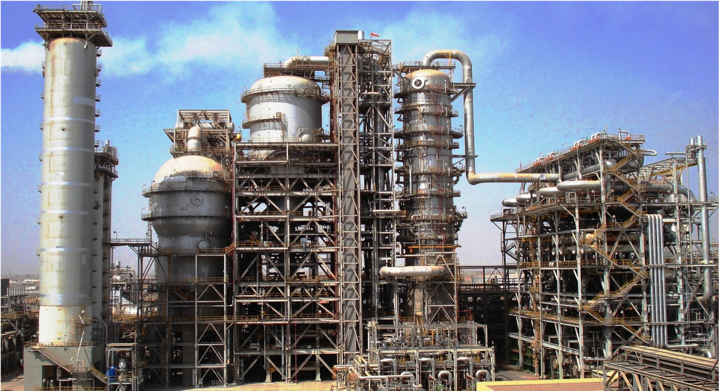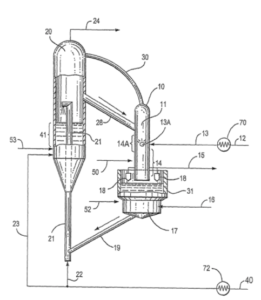Optimizing the production of lower olefins and particularly the production of propylene
 Historically, light straight run naphtha (LSRN) from crude processing units was cracked in a fluidized catalytic cracking (FCC) unit. Heavy naphthas were used as reformer feedstocks to produce aromatic gasoline, a process that is still in practice today. Amorphous catalysts and dense phase cracking were part of FCC operations. The LSRN was converted into gases, gasoline and coke. Conversion of LSRN was in the range of 30% to 50%, depending upon the operating conditions. Currently, over 99% of all existing FCC units are based on riser cracking processes, which are typically ineffective for cracking of paraffinic naphtha streams.
Historically, light straight run naphtha (LSRN) from crude processing units was cracked in a fluidized catalytic cracking (FCC) unit. Heavy naphthas were used as reformer feedstocks to produce aromatic gasoline, a process that is still in practice today. Amorphous catalysts and dense phase cracking were part of FCC operations. The LSRN was converted into gases, gasoline and coke. Conversion of LSRN was in the range of 30% to 50%, depending upon the operating conditions. Currently, over 99% of all existing FCC units are based on riser cracking processes, which are typically ineffective for cracking of paraffinic naphtha streams.
Catalytic cracking of olefinic naphthas is well known and is currently practiced in all types of FCC units. Recycled cracked naphtha and olefinic naphthas from FCC units, visbreakers or cokers are easily converted to propylene in the FCC reactor riser with the base feedstock. In this process, the gasoline produced from recycling is high in octane and aromatics.
However, none of the current commercial FCC processes can crack LSRN efficiently and effectively to produce an increased proportion of the lower olefins and gasoline. As used herein, “lower olefins” means ethylene, propylene and butylenes.
It would therefore be desirable to provide a process in which a paraffinic naphtha feed stream is cracked to provide a light olefin product stream, and particularly one having a high propylene content. The paraffinic naphtha feed streams can be derived from a crude oil atmospheric distillation unit, or toppers, that are by-product streams from the recovery of natural gas, or from hydrotreater and hydrocracker units, or other high paraffinic naphtha streams from an extraction process, or from any other refinery or petrochemical process.
Click here to read about this invention, “Fluidized Catalytic Cracking of Paraffinic Naphtha in a Downflow Reactor” Issued October 4, 2016, USPTO # 9,458,394
2 responses to “Cracking Paraffinic Naphtha in a Downflow Reactor”
Leave a Reply
You must be logged in to post a comment.







The advantages of cracking naphtha to produce propylene as compared to cracking conventional heavy feeds is:
1) naphtha does not need to be hydrotreated in advance to improve the yields and
2) naphtha cracking does not produce low value cycle oils.
If a full range or heavy naphtha is used, the unconverted naphtha is highly aromatic so it has value as a feedstock for an aromatics unit.
The disadvantage is that a source of supplemental heating is required to replace the coke that will not be produced when cracking naphtha.
Naphtha cracking works because high catalyst to oil ratios are used. The thermal mass of the hot catalyst is high so equilibration temperatures between the relatively cold feed and hot catalyst are high. In addition, the temperature decline in the downer is low which is, again, due to the high thermal mass of the catalyst. The combination of high catalyst to oil ratio and high temperatures produces enough severity to be able to convert naphtha which was heretofore considered to be unreactive.
From Daniel Longstaff, Science Specialist at Saudi Aramco via LinkedIn
True. But experienced base naphtha inlet rearrangement is useful. And over in the FCC adding a light ends splitter helps. Problems remain as you say. Look forward to reading about the bible invention.
-Bob Wittkower, CSP, Director HSE in manuf.; for Engineering Cos:HSEQ Lead; for Consulting:Refinery TA, Semiconductor, Pharma, Construction via LinkedIn